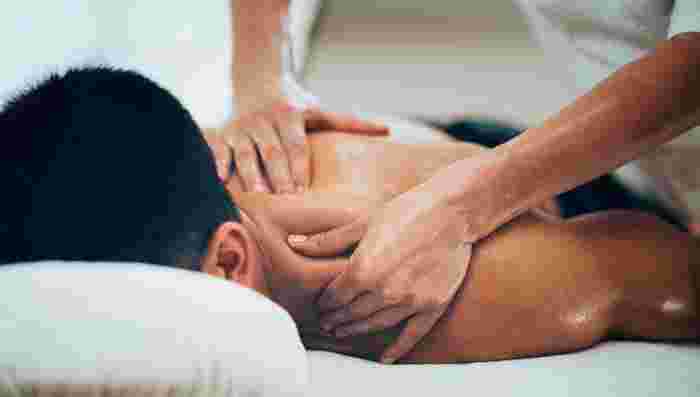Whether you're training for your first 5K or you’re a seasoned marathoner, sports massage could be the missing piece in your recovery routine.
Many runners focus heavily on mileage, pacing, and nutrition—but what about muscle maintenance and injury prevention? That's where sports massage steps in.
If you're wondering, “Do runners really need sports massage to perform better and stay injury-free?”—the short answer is yes.
And this post will show you exactly how it helps, what to expect, and when to book your next session.
Quick Overview: Why Runners Should Consider Sports Massage
At a Glance
-
Sports massage is tailored to athletic performance and recovery, making it ideal for runners of all levels.
-
It helps reduce muscle tightness, improve flexibility, and speed up recovery after long runs or races.
-
Regular sports massage can prevent common running injuries like shin splints, IT band syndrome, and plantar fasciitis.
-
Sessions can be focused on problem areas such as the calves, hamstrings, quads, and glutes—critical muscle groups for runners.
Want to dive deeper into how sports massage fits into your training and injury prevention? Keep reading!
Why Runners Get Injured (And How Massage Helps)
Running is a repetitive, high-impact activity. Over time, that repetition creates muscular imbalances, microtears, and stress on joints and ligaments.
Sports massage helps break this cycle by:
-
Increasing blood flow to fatigued muscles
-
Releasing tight fascia and knots
-
Improving lymphatic drainage to flush out metabolic waste
-
Helping muscles return to their resting length post-run
"The goal isn’t just to feel good—it’s to keep your muscles working the way they’re supposed to." — Certified Sports Therapist
Common Injuries Runners Face:
-
Shin splints
-
Achilles tendinopathy
-
Runner’s knee
-
IT band syndrome
-
Plantar fasciitis
These conditions often stem from tight muscles, poor mobility, or compensation patterns—all of which sports massage can help address before they turn into bigger issues.
When Should You Get a Sports Massage?
The timing of your massage depends on your training load, injury history, and upcoming race schedule. Here’s a general guide:
-
Before a race (2–3 days prior): Light flush to prepare muscles
-
After a race or long run (24–48 hours later): Deeper recovery work to address tension
-
During heavy training blocks: Weekly or fortnightly maintenance
-
Post-injury or niggle: As part of rehab with a qualified therapist
Pro Tip: Don't wait until you're limping to book a session. Preventative care is more effective (and cheaper) than injury rehab.
What to Expect During a Session
Sports massage isn’t always relaxing—but it’s highly effective.
You can expect:
-
Targeted treatment of overused muscles
-
Active and passive stretching techniques
-
Trigger point therapy to release knots
-
Communication with your therapist about your training
Did You Know?
Sports massage pressure is adjustable. It shouldn’t be unbearably painful. If it is, speak up!
A good therapist will tailor your session to your needs—whether you're post-marathon or prepping for a park run.
Quick Guide: What a Weekly Runner Might Experience
The Situation:
You're a weekend runner training for a half-marathon. Around week 5, your calves are sore, your IT band is tightening, and you're starting to skip warm-ups. Sound familiar?
Common Challenges:
-
Are tight calves slowing you down or changing your stride?
-
Does your IT band feel like a rope every time you foam roll?
-
Are your knees aching more after each run?
How to Solve It:
1. Prioritise recovery, not just mileage: Massage improves circulation and reduces DOMS (delayed-onset muscle soreness), meaning you recover faster and run more efficiently.
2. Address specific problem areas early: A good sports massage therapist will work on trigger points and imbalances before they turn into full-blown injuries.
3. Make it part of your routine: Think of massage like cross-training—it supports your overall program, not just post-race.
4. Communicate with your therapist: The more your massage therapist knows about your running volume, the more tailored your session becomes.
Why It Works:
By staying ahead of tightness and niggles, you’ll not only recover faster—but run longer without interruption. Runners who integrate sports massage into their training are less likely to get sidelined.
Need help recovering between runs? A sports massage might be just the thing.
FAQs: Sports Massage for Runners
Is sports massage only for elite athletes?
Not at all. Sports massage benefits anyone who exercises regularly—especially runners. Whether you're training for your first 10K or doing weekly park runs, you’ll feel the benefits in performance and recovery.
Does it hurt? Should I be sore after?
You might feel some discomfort during deep tissue work, especially on tight areas. It should be “good pain,” not sharp or unbearable. Afterward, some light soreness is normal, similar to a workout, and usually fades within 24–48 hours.
How is sports massage different from relaxation massage?
Sports massage is functional and specific—it targets overused or stressed muscles, uses techniques like deep tissue and trigger point therapy, and often involves stretching. Relaxation massage focuses more on overall stress reduction and calming the nervous system.
Can massage really prevent injuries?
While no treatment guarantees injury prevention, sports massage helps reduce the risk by improving circulation, flexibility, and muscle balance—making your body more resilient to repetitive strain.
Should I still stretch if I get sports massage?
Absolutely. Think of massage as complementary to your other recovery strategies like stretching, foam rolling, sleep, and hydration.
Conclusion: Your Legs Will Thank You
If you’re serious about running—whether it’s for fitness, competition, or fun—sports massage deserves a place in your routine. It’s not just a “treat,” but a smart recovery and injury-prevention strategy. By keeping your muscles supple, improving mobility, and addressing tight spots early, you’ll run stronger, feel better, and stay off the physio table longer.
Think of it this way: You train hard—don’t let recovery be the weak link in your performance.




